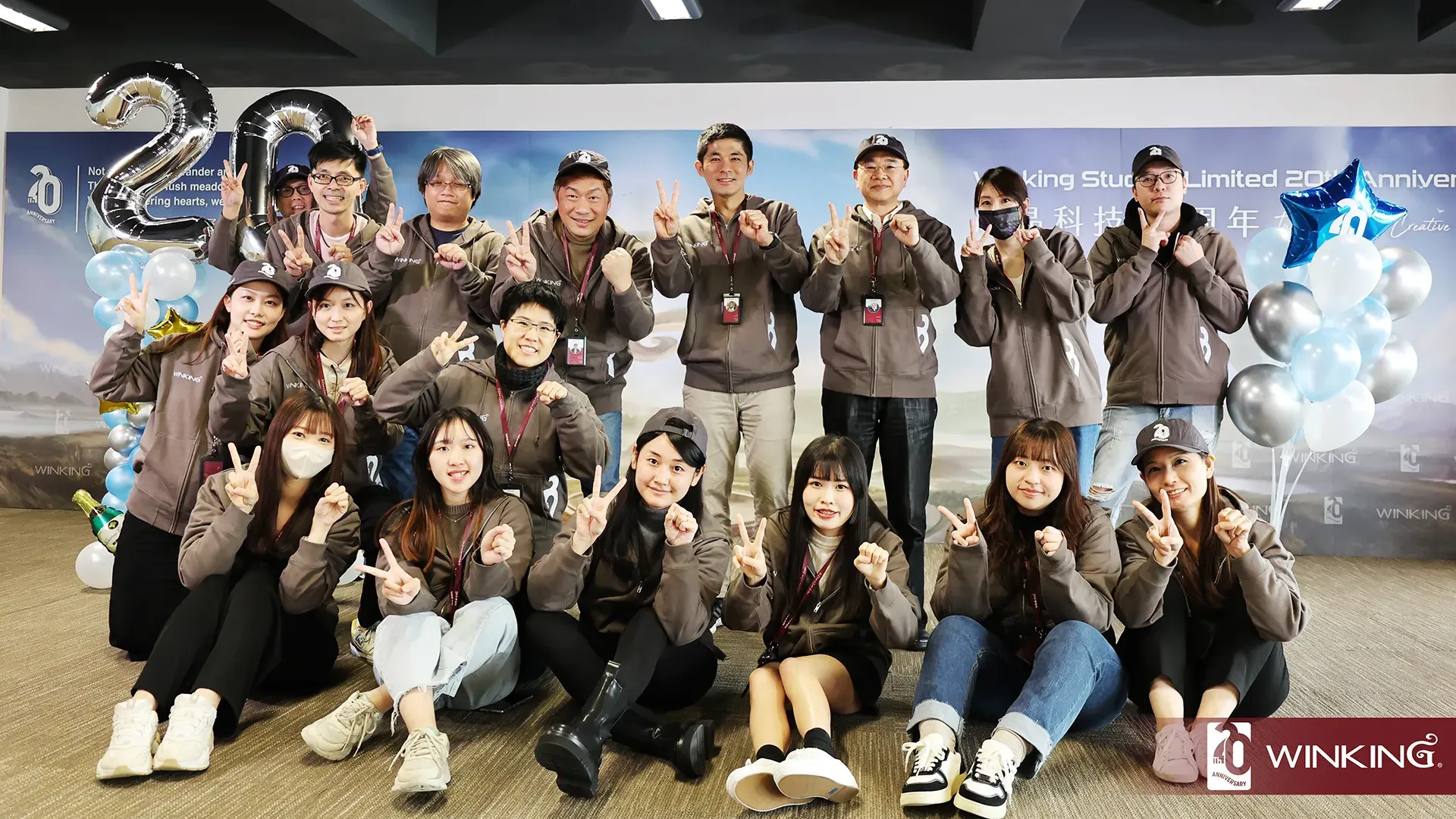Behind every game, there is a group of enthusiastic developers, bringing players joy after a long day of work or immersing in the imagination of a beautiful world. In a development team, different talents are needed, such as programmer, designer, artist, and game testing specialist, also known as QA. All these specialists work closely together to create great works.
This Labor Day, we would like to thank all associates for their hard work. Winking Studios also took the time to interview some of these hidden talents behind a game to show everyone their experiences, revealing their professional and excellent abilities. Follow along.
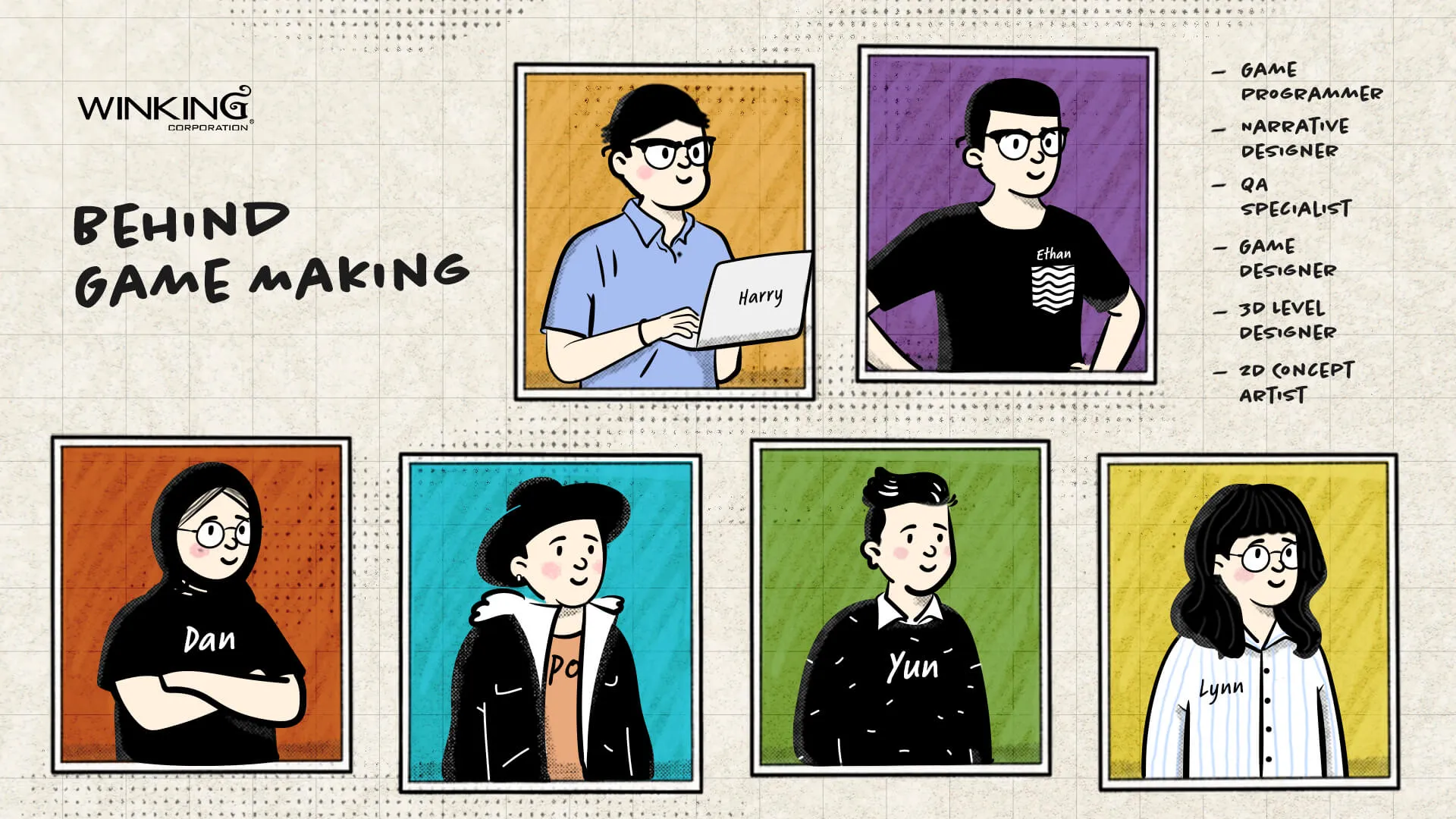
Game Programmer – Harry
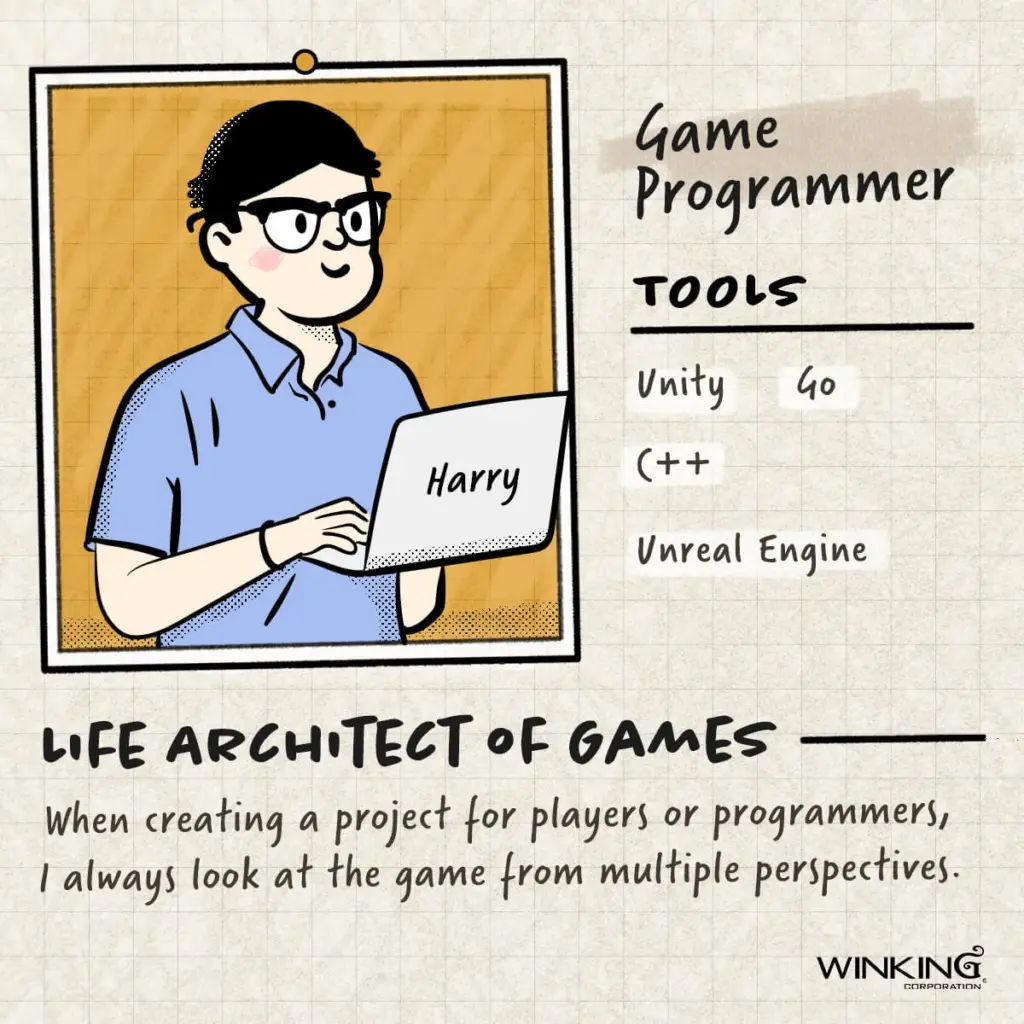
There are roughly two types of game programmers: front-end and back-end. The main job of the front-end programmer is to develop games using engine tools, and it always has to be done as a team.
First, we will write a system editor so the game designer and artists can effectively put values and objects in the game. Constant discussions and revisions among the team are the only way to make a great game. The front-end programmer is also responsible for game maintenance and optimization. We will also pick up new ways of making things now and then so that we are always up to date as far as the latest technology goes.
The back-end programmer is responsible for making a structural database, establishing a bridge for communication between front-end programs, and setting up a server to transmit and store data.
When creating a project for players or programmers, I always look at the game from multiple perspectives. Understanding the user experience will make the game much more intuitive. As a programmer, we often work with a team of different talents, allowing us to learn about the game from a different angle.
Tools used: Unreal Engine, Unity, C++, Go
Narrative Designer – Ethan
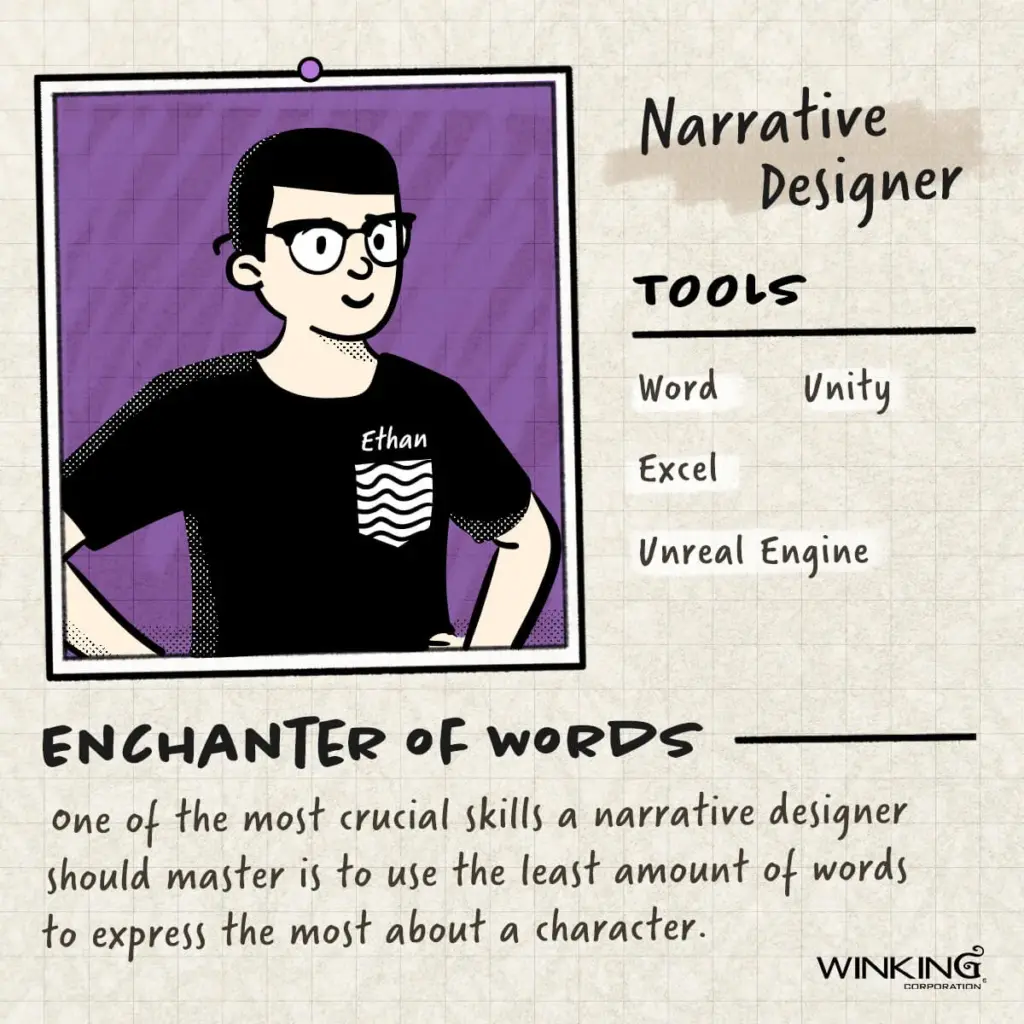
The narrative designer is responsible for composing a perfect blend of the story between the plot of the game, the characters, and the environment. The theme should also express the core concept and style of the game.
Whenever there is an event in the game, the narrator will first think about the essence and the elements of the event, then put together an appropriate game character to add a livelier dimension to the event.
In addition to the fascinating plot, the character’s charm is the most important in the game world. The narrative designer should have an in-depth and delicate analysis of the character’s personality and classify the characters into different types. For example, the recklessness of Vi in League of Legends is different from the savageness of Kratos in God of War. After character definition, the designer must express the distinct characteristics with simple dialogues or interactions with other in-game characters.
When different characters come together, not only should they maintain their charms, but also consider whether they are compatible with each other under the same worldview.
Tools used: Word, Excel, Unreal Engine, Unity
Game Designer – Yun
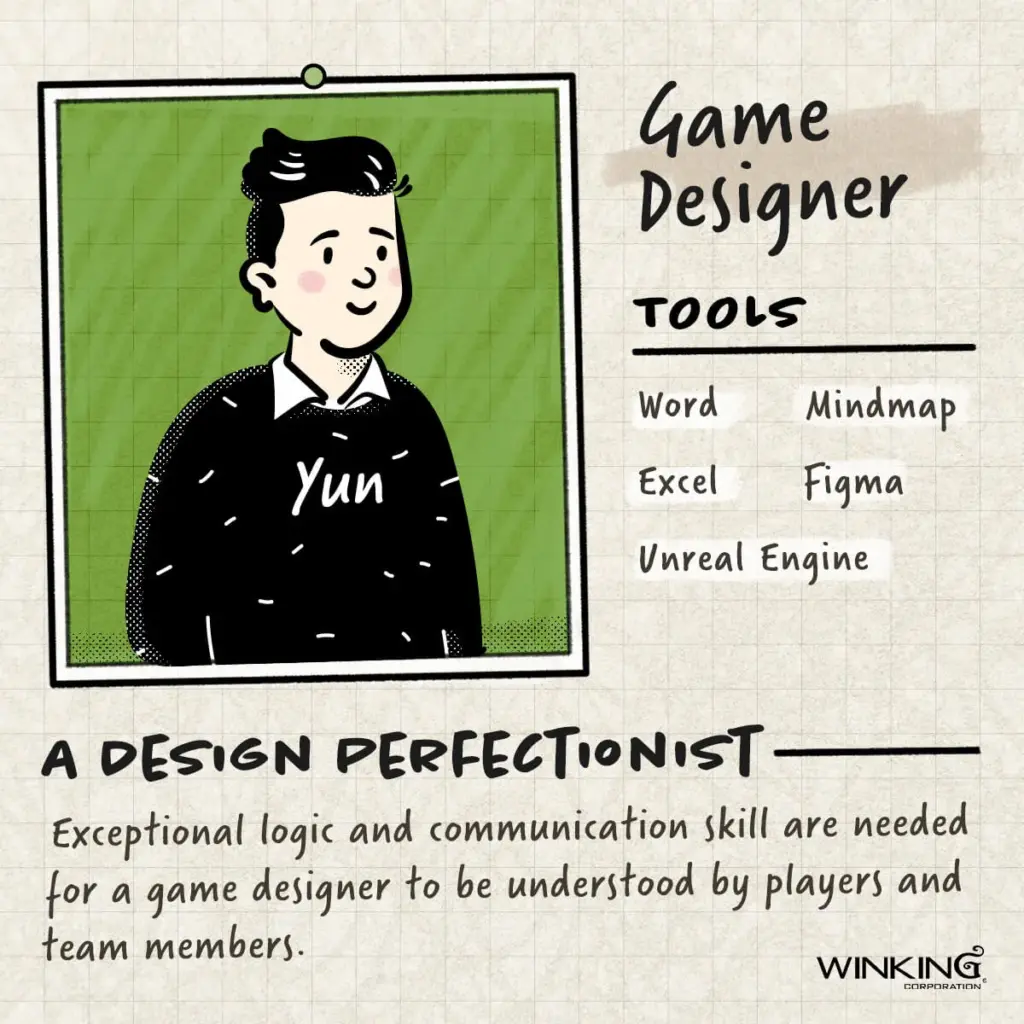
A game designer is responsible for establishing in-game systems and rules. These include deciding whether the core gameplay is turn-based or real-time, what mechanism in-game characters use to enhance their abilities, the configuration and structure of the system interface, and the tutorial when the player first enters the game.
Our task is to create game design files with organized text and system flow charts. Then, discuss with programmers and designers, and make an efficient editor of the game system. The game designer essentially has to balance values, levels, plot, and playability.
Exceptional logic and communication skill are needed for a game designer to possess so that players and team members can understand the game intuitively. In the process of discussion and communication, opinions from different departments can often contribute some critical references for the project. Usually, more contact with different types of games and operation processes are all ways to improve skills.
Tools used: Word, Excel, Unreal Engine, Figma
QA Specialist – Lynn
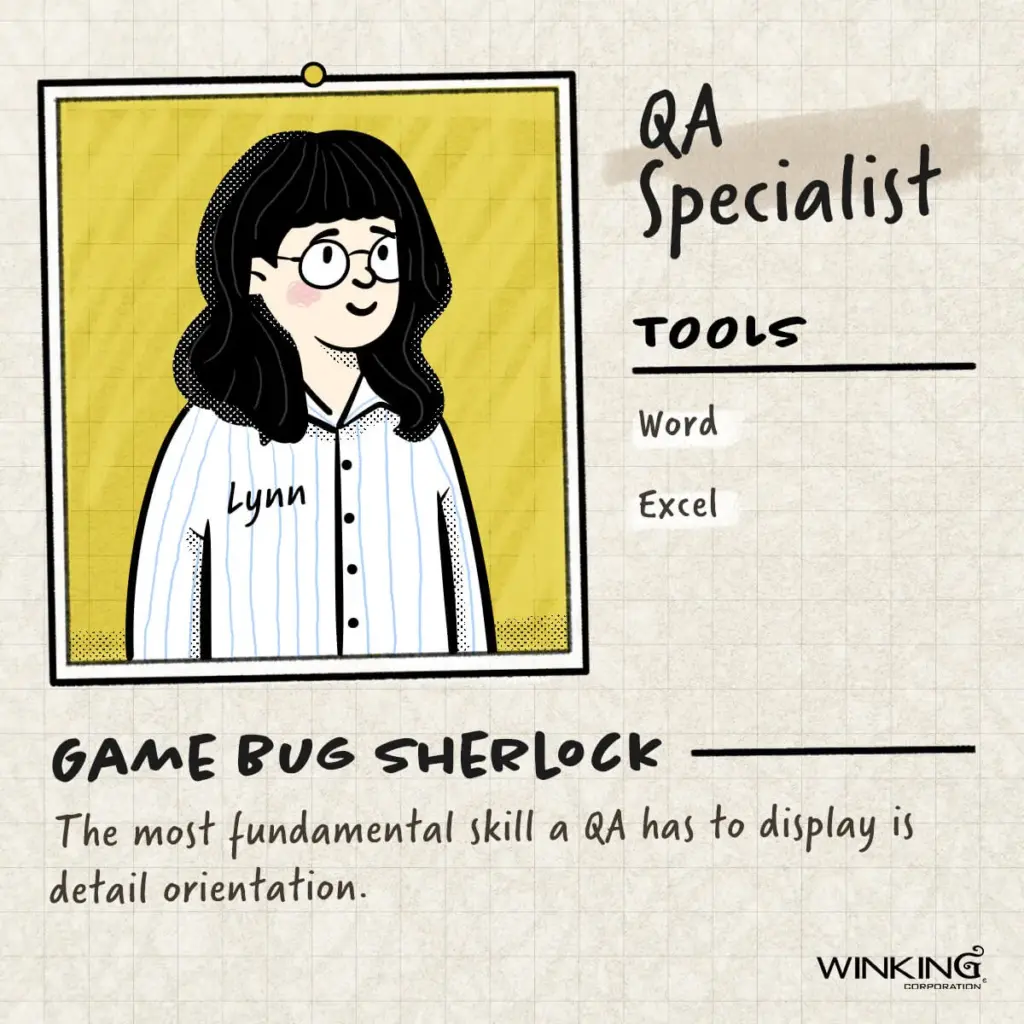
In the early stage of game development, QA provides feedback on the gameplay and level design of the development team as a reference for the development direction. In the later stages of development, we must repeatedly use different control to check the parts in the game that need optimization. In addition, in the face of thousands of players, their various operations may cause problems. So, to drive out all the bugs, we will also simulate some abnormal operation procedures to try to destroy the game system, so to speak. Establishing a systematic test form and doing the column-based inspection is more helpful in accurately checking differnt stages of the game.
The most fundamental skill a QA has to display is detail orientation. The same bug might not happen in all versions, so a good QA must go over the parts as many times as necessary. When communicating problems to the development team, we must provide precise information concerning where the bug happened and when. All detail must be recorded and presented to ensure effective communication.
Tools used: Word, Excel
3D Level Designer – PO
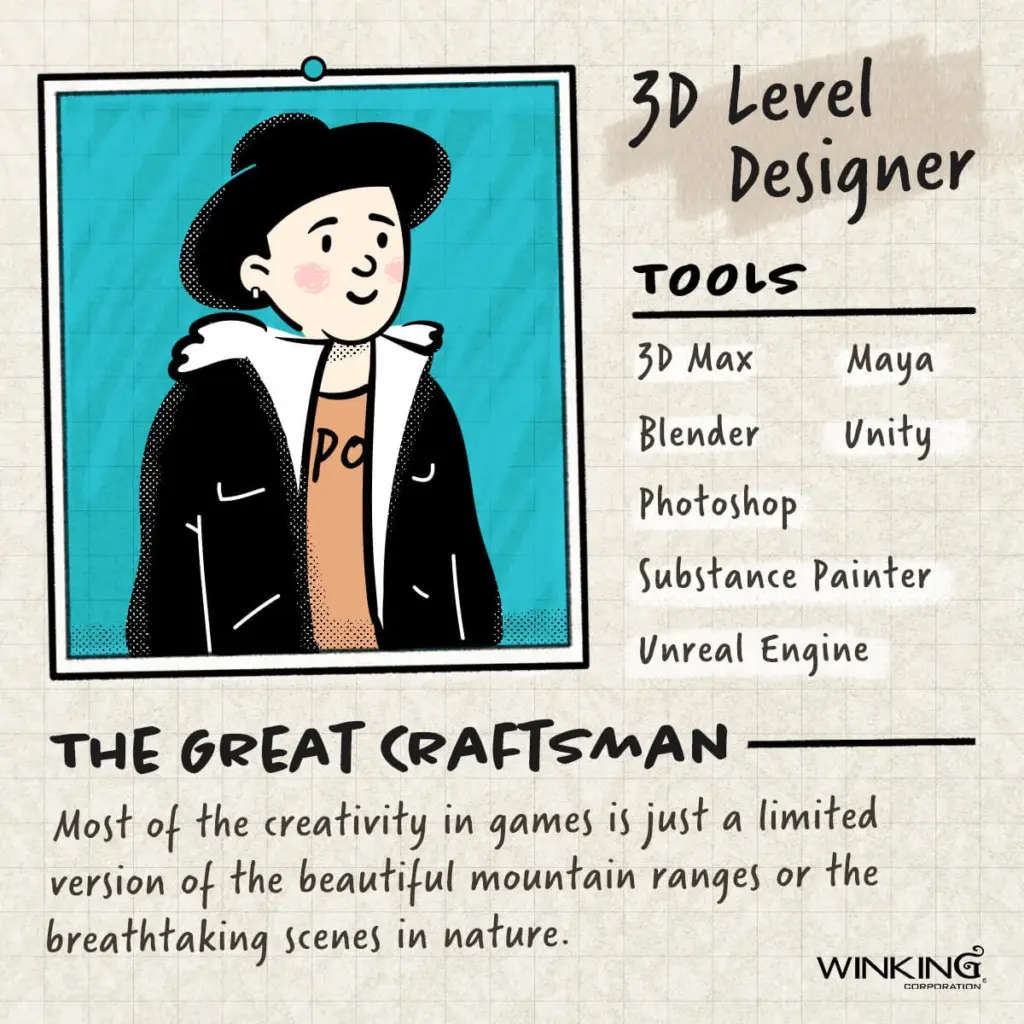
A 3D level designer’s first job is to take what’s on the paper and make a scene prototype of the game. When making a level in-game, we expect to adjust and optimize the scene quite often. Meanwhile, we design models, trigger animations, change scenes, generate special effects, and set the playable boundaries according to the game flow.
When constructing a scene, we put together assets based on the model from the concept artist. Then, by tweaking and adjusting values, lighting the scene, and post-production, we can bring the game to the players at this stage. The final touches are the visual and sound effects.
Game engines update quite often, so we must keep learning to stay informed. Other than the high level of professionalism, good communication skills with the team can also make the presentation of the scene more in line with the overall theme of the game. Most of the creativity in games is just a limited version of the beautiful mountain ranges or the breathtaking scenes in nature.
Tools used: 3D Max, Maya, Blender, Substance Painter, Photoshop, Unreal Engine, Unity
2D Concept Artist – Dan
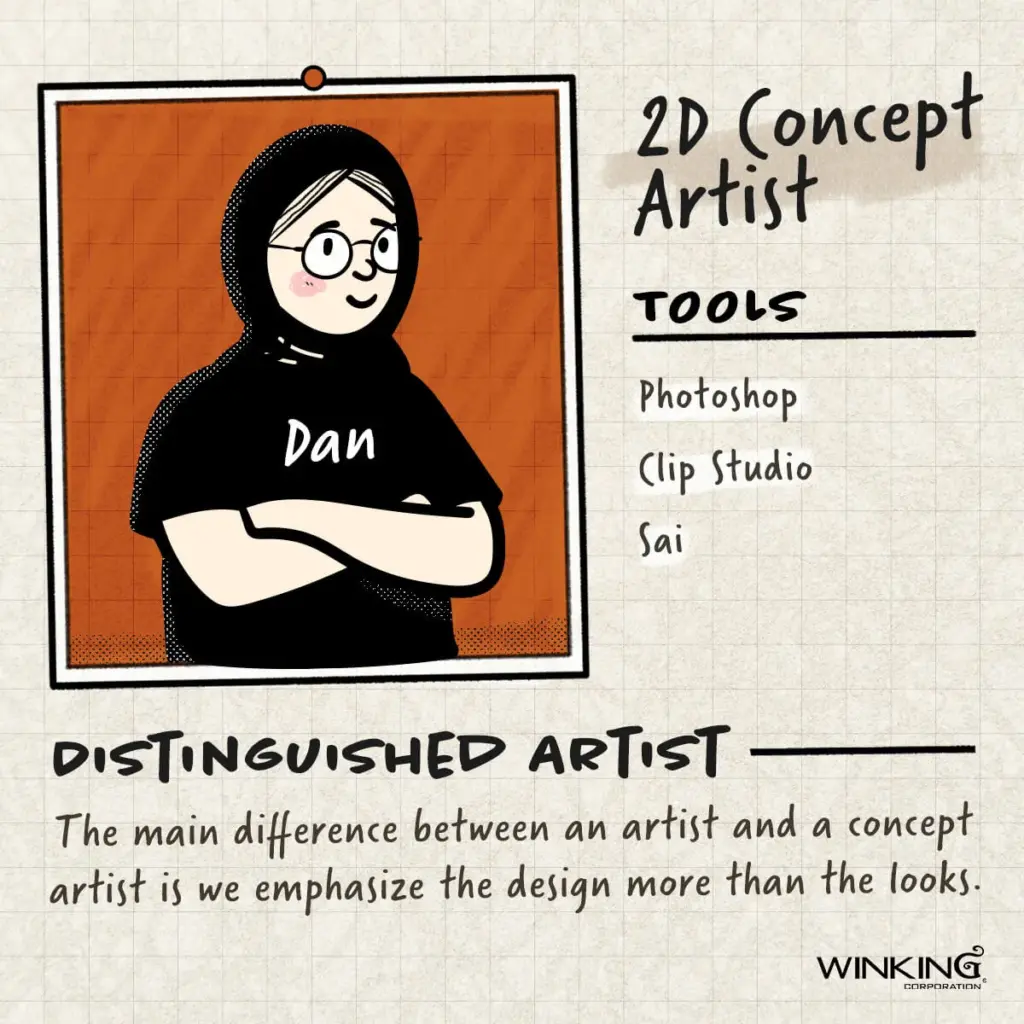
What a 2D concept artist does is research and generate ideas according to the text-based proposal of the game. When the first draft of the scene has been compiled, we go to the game designer to make sure it fully reflects the original idea. After the concept map is finalized, we will draw and disassemble a complete original drawing of the scene, so the 3D modelers can see the detail of each object when they edit the map.
The main difference between an artist and a concept artist is we emphasize the design more than the looks. All the concept designs are tailored according to the clients’ needs. The stunning quality of the scene can be brought to an excellent state through some creativity in details, design ideas, and the optimization of the atmosphere in-game.
Tools used: Photoshop, Sai, Clip Studio
A big thank you to all the exceptional members of the Winking family.
Let’s keep growing and progressing together in this journey.
Have a safe and happy Labor Day!

